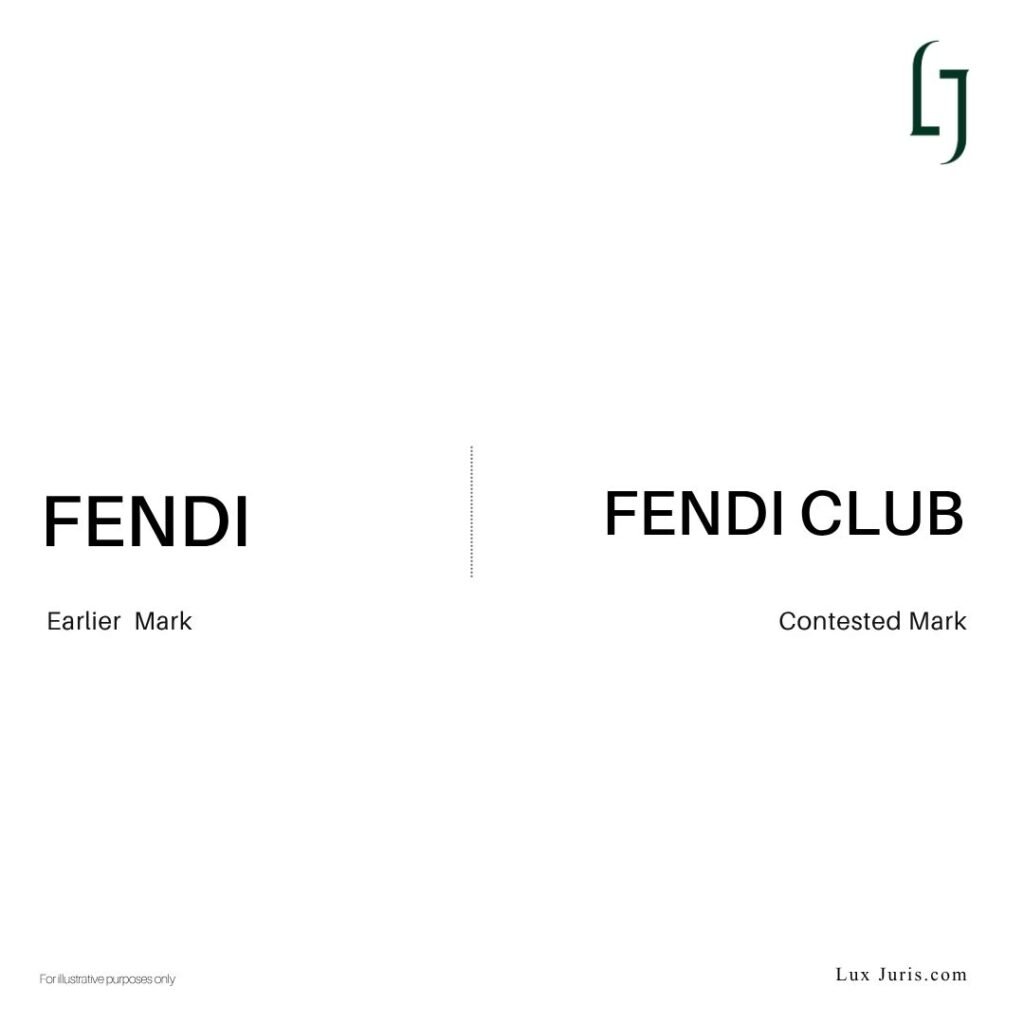Fendi faced a challenge to its name when Europe Design Center sought registration for “Fendi Club”, a mark that stepped directly into the linguistic space of the Italian house. Its structure, Fendi followed by Club, implied affiliation, as though denoting a exclusive circle or collection within the brand’s own world.
Unsurprisingly, Fendi opposed the filing, relying on its established EU registrations for FENDI, spanning jewellery, bags, clothing, retail and design. The opposition was comprehensive, extending across all classes of the contested application and covering both goods and services. The comparison that followed sought to determine whether Fendi Club occupied the same field as the earlier marks and whether its use could lead the public to believe the two originated from the same source.
Comparison of Goods and Services
The EUIPO began with the traditional comparison exercise. Jewellery, watches, clothing, footwear, bags and accessories mirrored Fendi’s prior registrations and were deemed identical or highly similar. Advertising and design services were also included, reflecting Fendi’s operational range beyond physical goods.
The only exception was precious metals and imitations thereof, which the Office viewed as industrial raw materials, considered distinct from Fendi’s finished luxury goods. These would target a professional market, sold through separate distribution channels, and were therefore considered dissimilar.
Assessment of the Signs

The competing signs, FENDI and FENDI CLUB, were then examined as to overall impression. The shared initial element FENDI dominated, while CLUB was found to be generic, weakly distinctive, and conceptually limited to a notion of association or membership.
Consumers, reading from left to right, focus on a mark’s opening element. Here, the initial word coincided entirely with Fendi’s earlier mark, ensuring a strong visual and phonetic overlap. Conceptual differentiation was minimal and carried little weight given the low distinctiveness of CLUB.
The Office concluded that the later mark was likely to be perceived not as a distinct sign, but as an offshoot or sub-brand within Fendi’s portfolio.
Likelihood of Confusion
Given that most goods and services were identical or similar, and that FENDI was fully reproduced at the beginning of the contested mark, the EUIPO held that a likelihood of confusion existed.
Consumers could easily believe that Fendi Club denoted a collection, membership programme, or affiliated range managed by Fendi itself. The opposition was therefore upheld for jewellery, leather goods, clothing, footwear, advertising and design services.
The mark could proceed only for precious metals and imitations thereof, the single category found to be commercially remote.
The Reputation Claim
Fendi also sought to extend its protection to these remaining goods by invoking reputation, arguing that its name was sufficiently renowned to block even dissimilar products.
The evidence submitted: a mixture of press articles, brand rankings, corporate histories and a prior Italian opposition decision, failed to satisfy the Office. The documentation was considered broad and largely descriptive, offering no verifiable data on sales, market share or advertising investment. Wikipedia sources were excluded as unreliable, while references to Fendi’s position in general “luxury” rankings were deemed too imprecise to establish reputation in specific product categories.
The Italian decision, though favourable to Fendi, had no binding effect and was based on different evidence. With no measurable proof, the EUIPO concluded that reputation had not been established.
As the contested mark was filed on 6 September 2024, Fendi was required to demonstrate that its reputation was already established by that date. The evidence failed to meet that temporal and quantitative standard, and the claim was dismissed.
Decision and Outcome
The decision, issued on 30 October 2025, upheld Fendi’s opposition in part. Fendi Club was refused registration for all goods and services identical or similar to Fendi’s existing rights, including jewellery, bags, apparel, footwear, advertising and design.
The application was allowed to proceed only for precious metals and their imitations. Each party bore its own costs, reflecting the split outcome.
The EUIPO noted that any party affected by the decision may appeal within two months of notification and file grounds within four. The appeal becomes valid only once the prescribed fee is paid.
Conclusion
The decision is instructive on two levels. First, it affirms the EUIPO’s consistent stance that the reproduction of a distinctive trademark at the start of another’s sign will almost inevitably trigger confusion, particularly in luxury and fashion contexts where brand identity shapes consumer perception.
Second, it exposes the evidentiary fragility of reputation claims. The ruling reiterates that reputation must be demonstrated through quantifiable market evidence, not inferred from cultural prominence or historical prestige. Even a globally visible luxury house must meet the procedural threshold of data and documentation.
The Office also noted that proof of reputation must exist before the filing of the contested mark and remain in place at the time of the decision. This timing requirement prevents reliance on later acquired fame and demands evidence of sustained recognition. Fendi’s submissions, while detailed in background, did not meet that standard.
What emerges is a legal distinction that luxury brands often overlook: distinctiveness protects the name, reputation must prove its reach. Fendi prevailed on the former but stumbled on the latter, illustrating that prestige alone cannot substitute for proof.
